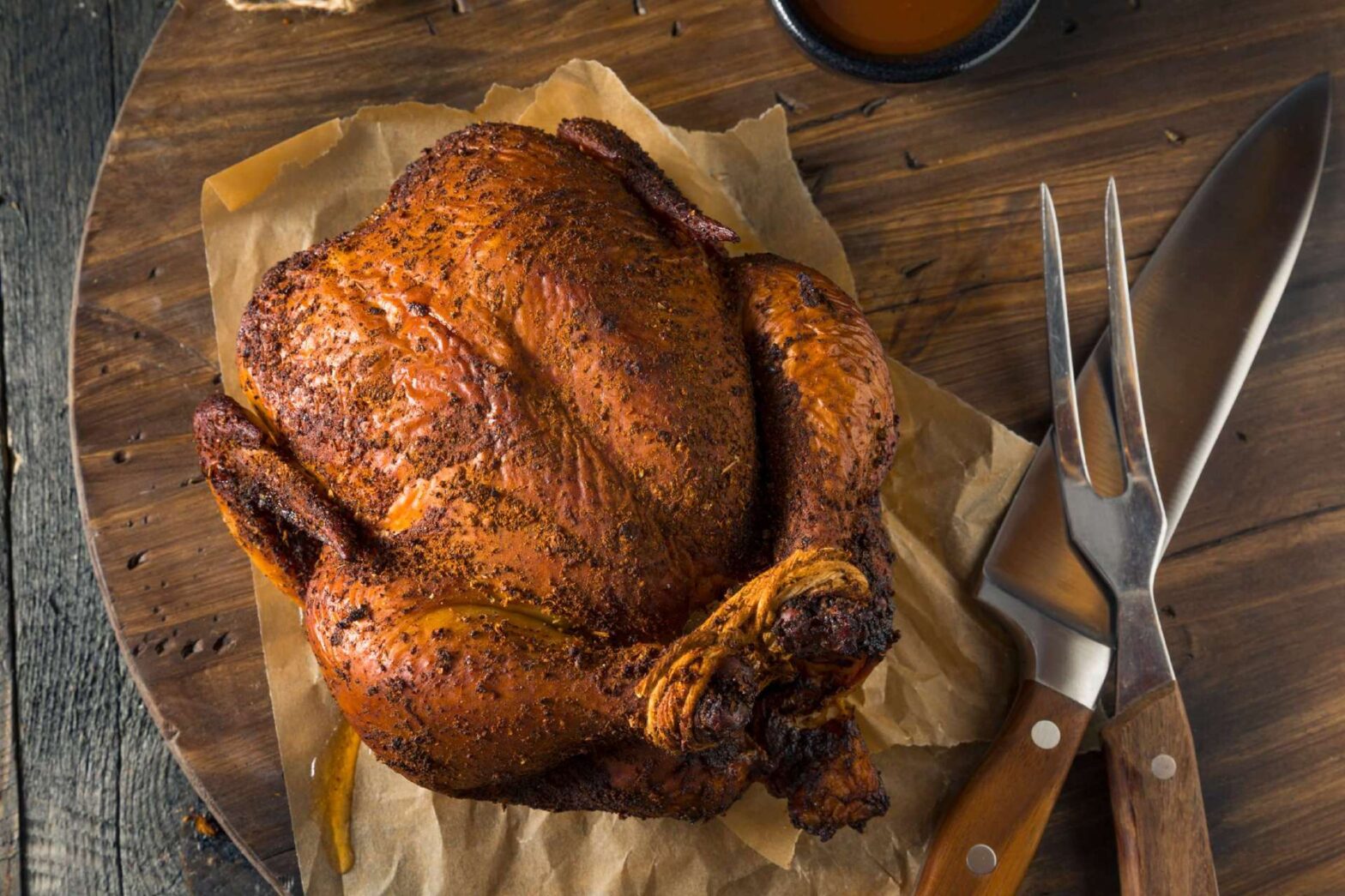Trussing a beef tenderloin roast, a crown roast of pork, or a whole bird before throwing it on the grill or putting it in the smoker is an important step that should never be omitted if called for in the recipe.
It helps the meat to hold its shape so that it cooks evenly, looks appetizing, and the stuffing stays in place. The result is a juicy, browned, flavorsome piece of meat that pleases the eye and makes the mouth water.
To truss a bird, a fish, or a slab of meat, we tie it with butcher’s twine using a variety of knots and tying techniques. This prompts some grillers and meat smokers to rightfully ask, “How safe is butcher’s twine, a 100% cotton cord, in the heat of cooking?”
Butcher’s twine is suitable for grilling, barbecuing, and smoking meat, provided it has been soaked in water beforehand and does not get exposed to flames. As the meat cooks, the twine also absorbs some of the escaping juices, preventing it from catching fire.
Some say that butcher’s twine is safe to use up to a temperature of 600°F, and that it will only catch fire if it is exposed to heat higher than that for an extended period of time.
This is well above what is considered a normal grilling temperature. On a charcoal or gas grill, high heat is in the range of 450-500°F, medium-high is 350-400°F, medium is 300-350°F, medium-low is 250-300°F, and low is 200-250°F.
The problem usually occurs when the melting fat of the meat flares up and the flames start to burn the yarn. When in doubt, move the meat over to indirect heat, where flare-ups do not appear.
Setting Up Your Grill for Indirect Heat
When you’ve set up your grill properly—particularly when cooking over charcoal or lumps or chunks of wood—its highest cooking temperature should not be much different from that of your oven.
Higher temperatures not only burn the twine but also char the outside of the meat beyond salvation. A well-heated grill sears the meat perfectly with intense, direct heat and cooks it through with gentle, indirect heat.
But it never burns it. (A note for those of you who grill on charcoal: If that’s not the case with your grill, you are probably not waiting for the coals to ash over, or turn white, before you get cooking.)
On a charcoal grill:
To set up a charcoal grill so that you get control over the heat and can adjust the position of the meat accordingly, light the coals, wait for them to turn white and ashy, and then rake them over to make yourself a three-zone fire:
- A double layer of coals on one side for high-heat searing;
- A single, thinner layer of coals in the middle for medium-heat grilling;
- A charcoal-free zone on the opposite side for low-and-slow cooking over indirect heat.
When in doubt: Cook the meat over the charcoal-free, indirect-heat zone.
On a gas grill:
To set up a gas grill for indirect heat, adjust the burners strategically:
- Preheat a two-burner grill by setting Burner 1 to medium-high and keeping Burner 2 turned off;
- Preheat a three-burner grill by setting Burner 1 to medium-high, Burner 2 to medium, and keeping Burner 3 turned off;
- Preheat a four-burner grill by setting Burner 1 to medium-high, Burner 2 to medium, Burner 3 to medium-low, and keeping Burner 4 turned off.
Adjust the burners accordingly on a grill with five or six burners.
When in doubt: Cook low and slow over medium-low or indirect heat to safeguard the twine from burning.
Tying Any Cut of Meat With Butcher’s Twine
Butcher’s string is made out of 100% biodegradable cotton. Use it to tie red meat, poultry, and seafood securely; it can be twisted and tied into knots without tearing, and it can be used in the oven or on the grill without burning.
Stock up on it at butcher shops, meat markets, grocery store meat counters, and home improvement stores. There’s nothing worse than being 90% done tying a piece of meat and then realizing you have run out of string.
Always soak butcher’s twine in water or, for extra flavor where the twine touches the meat, in broth or vinegar, for 2-3 minutes before using it.
Some cookbook authors advise that you should start in the middle and work your way out when tying beef, pork, or lamb. However, we believe there is a better way—and that way is to go under the meat on one side, make a loop, and then repeat the process, spacing the loops 1 inch apart.
This technique is best demonstrated by Certified Master Chef Edward Leonard in the YouTube clip below:
Trussing chicken is a skill on its own. Once again, there is the traditional tying method, which leads to overcooked breasts and undercooked legs, and a better tying method.
The better method, as demonstrated by ChefSteps in the clip below, results in a crispier skin and an evenly cooked bird, including the breasts and legs.
It takes a while to learn, but once you do, the chicken will taste so good, you won’t want to go back to any other tying technique.
In Summary
I have been grilling, barbecuing and smoking meat tied with butcher’s twine for ages. And, whenever I have remembered to keep the twine away from direct heat and flare-ups, I have never burned or charred it to the point that it no longer served its purpose. Do the same, and you won’t regret it.


